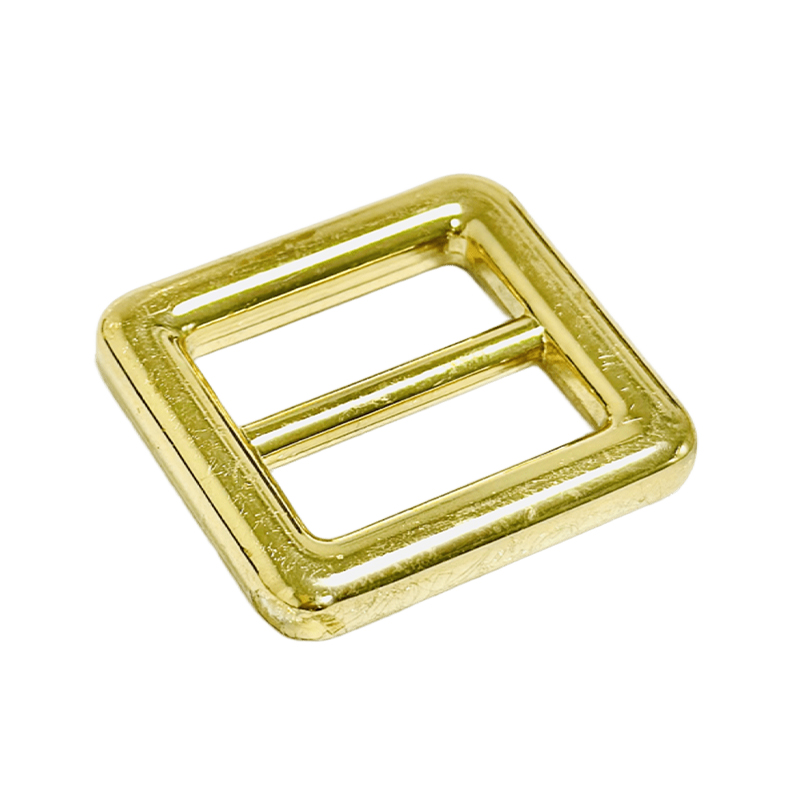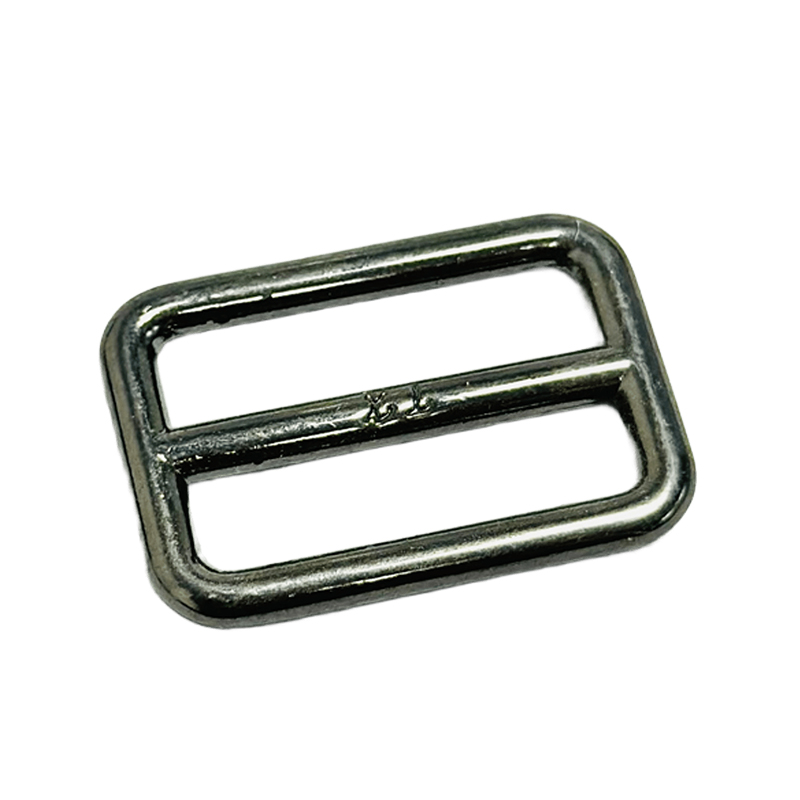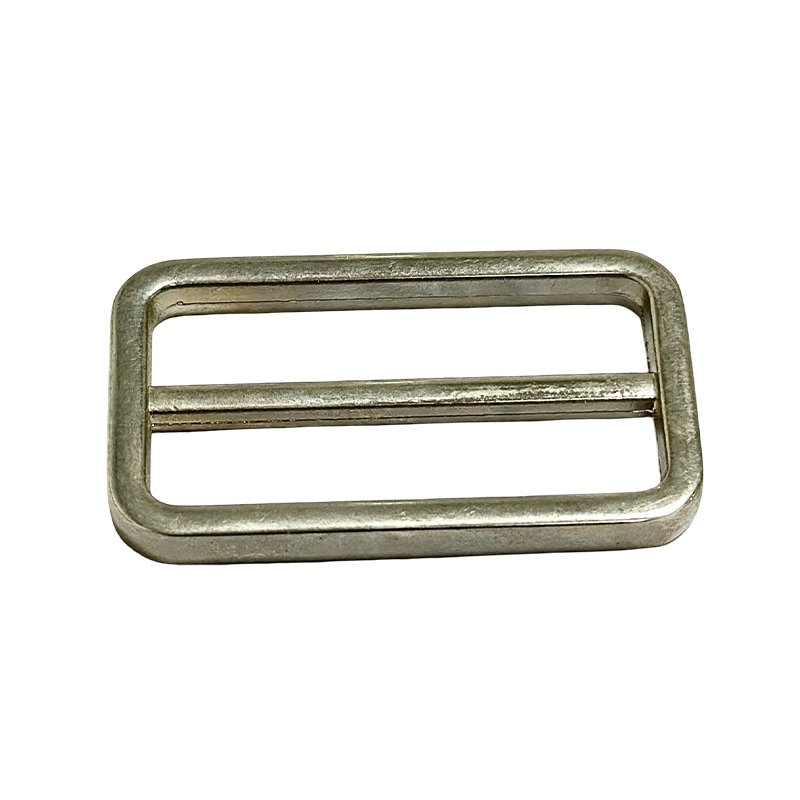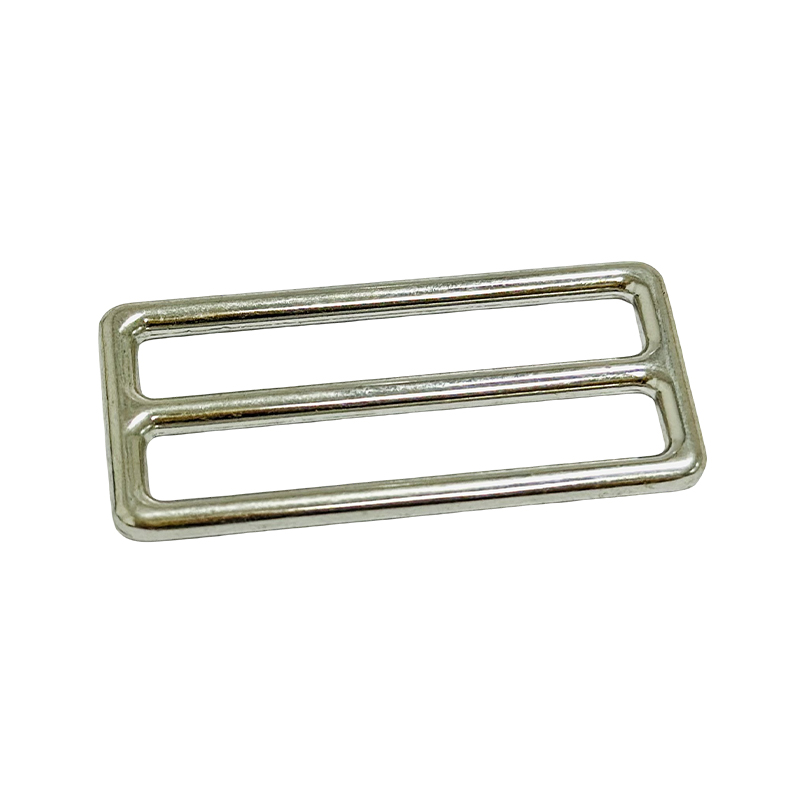How does the material selection of alloy dog buckles affect its strength and corrosion resistance?
Release Time : 2025-09-23
As a crucial connecting component widely used in applications such as pet leashes, outdoor sports, tactical equipment, and industrial connections, the performance of alloy dog buckles directly impacts safety and lifespan. Among the many influencing factors, material selection is the most fundamental and decisive factor. It determines not only the mechanical strength of the buckle but also its corrosion resistance in various environments. A reliable dog buckle must maintain structural integrity and functionality under sudden tensile forces, frequent opening and closing, and prolonged exposure to moisture, salt spray, or chemicals. The material itself is the starting point for these essential properties.
Common alloy dog buckles are made of zinc alloy, aluminum alloy, or stainless steel. Different materials exhibit significant differences in strength and corrosion resistance. Zinc alloys, with their excellent casting fluidity, are often used to manufacture complex dog buckles, enabling intricate designs and robust locking mechanisms. However, pure zinc alloys have relatively limited inherent strength and are prone to plastic deformation or fracture under high stress. To improve performance, alloying elements such as copper, magnesium, and titanium are added to form multi-element alloys, optimizing the grain structure and enhancing tensile and shear strength. Even so, zinc alloys are susceptible to electrochemical corrosion in humid environments, especially galvanic corrosion when in contact with other metals, necessitating surface treatments to compensate for this weakness.
Aluminum alloys offer a good balance between lightweight and strength. Their low density makes them easy to carry, ideal for applications requiring reduced weight, such as outdoor hiking or tactical equipment. Heat-treated aerospace-grade aluminum alloys possess high specific strength, capable of withstanding significant loads with a small cross-section. Furthermore, the naturally formed oxide layer on aluminum provides some self-protection against further oxidation. Anodizing creates a thicker, denser oxide layer, significantly enhancing wear and weather resistance. This treatment not only improves corrosion resistance but also adds diverse colors and textures, satisfying aesthetic needs.
Stainless steel excels in overall strength and corrosion resistance. Its composition, rich in alloying elements such as chromium and nickel, allows it to spontaneously form a dense and stable passivation film on its surface, effectively resisting corrosion from water vapor, salt, acids, and alkalis. This characteristic makes it ideal for marine environments, high-humidity areas, or applications requiring frequent cleaning and disinfection. Furthermore, the crystal structure of stainless steel provides excellent tensile strength and toughness, preventing brittle fracture even under low temperatures or impact loads. However, its high processing difficulty, typically requiring forging or CNC precision machining, results in relatively high costs.
Besides the material itself, the manufacturing process significantly impacts the final performance. Die casting, while efficient, can lead to internal porosity, weakening structural integrity; whereas cold forging or hot forging processes refine the grain structure through plastic deformation, improving material density and mechanical properties. Subsequent heat treatments, such as solution annealing or precipitation hardening, further optimize internal stress distribution and enhance durability.
Surface treatment is an important complement to extending the lifespan of dog collars. Electroplating, spraying, and passivation not only improve aesthetics but also form physical or chemical barriers, preventing contact between the environment and the base material. For example, a dual nickel-chromium plating on a zinc alloy effectively prevents oxidation of the underlying metal; while hard anodizing of aluminum alloy significantly increases surface hardness, resisting scratches and abrasion.
Ultimately, material selection must be based on the specific application. For high-strength applications, stainless steel or high-strength aluminum alloys are preferred; while for everyday pet use, weight and cost can be considered while ensuring safety. Regardless of the material, only through the synergistic effect of material composition, processing control, and surface protection can a robust and durable high-quality dog collar be achieved.
Common alloy dog buckles are made of zinc alloy, aluminum alloy, or stainless steel. Different materials exhibit significant differences in strength and corrosion resistance. Zinc alloys, with their excellent casting fluidity, are often used to manufacture complex dog buckles, enabling intricate designs and robust locking mechanisms. However, pure zinc alloys have relatively limited inherent strength and are prone to plastic deformation or fracture under high stress. To improve performance, alloying elements such as copper, magnesium, and titanium are added to form multi-element alloys, optimizing the grain structure and enhancing tensile and shear strength. Even so, zinc alloys are susceptible to electrochemical corrosion in humid environments, especially galvanic corrosion when in contact with other metals, necessitating surface treatments to compensate for this weakness.
Aluminum alloys offer a good balance between lightweight and strength. Their low density makes them easy to carry, ideal for applications requiring reduced weight, such as outdoor hiking or tactical equipment. Heat-treated aerospace-grade aluminum alloys possess high specific strength, capable of withstanding significant loads with a small cross-section. Furthermore, the naturally formed oxide layer on aluminum provides some self-protection against further oxidation. Anodizing creates a thicker, denser oxide layer, significantly enhancing wear and weather resistance. This treatment not only improves corrosion resistance but also adds diverse colors and textures, satisfying aesthetic needs.
Stainless steel excels in overall strength and corrosion resistance. Its composition, rich in alloying elements such as chromium and nickel, allows it to spontaneously form a dense and stable passivation film on its surface, effectively resisting corrosion from water vapor, salt, acids, and alkalis. This characteristic makes it ideal for marine environments, high-humidity areas, or applications requiring frequent cleaning and disinfection. Furthermore, the crystal structure of stainless steel provides excellent tensile strength and toughness, preventing brittle fracture even under low temperatures or impact loads. However, its high processing difficulty, typically requiring forging or CNC precision machining, results in relatively high costs.
Besides the material itself, the manufacturing process significantly impacts the final performance. Die casting, while efficient, can lead to internal porosity, weakening structural integrity; whereas cold forging or hot forging processes refine the grain structure through plastic deformation, improving material density and mechanical properties. Subsequent heat treatments, such as solution annealing or precipitation hardening, further optimize internal stress distribution and enhance durability.
Surface treatment is an important complement to extending the lifespan of dog collars. Electroplating, spraying, and passivation not only improve aesthetics but also form physical or chemical barriers, preventing contact between the environment and the base material. For example, a dual nickel-chromium plating on a zinc alloy effectively prevents oxidation of the underlying metal; while hard anodizing of aluminum alloy significantly increases surface hardness, resisting scratches and abrasion.
Ultimately, material selection must be based on the specific application. For high-strength applications, stainless steel or high-strength aluminum alloys are preferred; while for everyday pet use, weight and cost can be considered while ensuring safety. Regardless of the material, only through the synergistic effect of material composition, processing control, and surface protection can a robust and durable high-quality dog collar be achieved.







